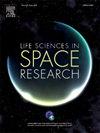Food technologies for space missions
IF 2.8
3区 生物学
Q2 ASTRONOMY & ASTROPHYSICS
引用次数: 0
Abstract
Provision of safe and nutritious food for space missions is very critical; failure to provide the appropriate food along with suitable delivery and disposal systems may cause risk and hamper the mission success or crew performance. The major requirements of space-specific foods include lightweight, compact size, quick preparation, ease of consumption, low fragmentation, high acceptability, wholesomeness, stability, variety, gastrointestinal compatibility, and safe food in a convenient form with longer shelf life. Significant developments have taken place in food technologies in the last few decades to attain more appealing and nutritious food. The technologies have gone beyond the normal cooking of foods to modern food processing and packaging technologies which enabled the food materials to remain safe for longer durations without affecting their nutritional and organoleptic attributes. Modern space food technologies have transformed the space food and delivery systems for low orbit crews to those stationed at the International Space Station. Research on the cultivation of fresh vegetables in space under microgravity conditions is also gaining momentum. In general, thermo-stabilized, irradiated, rehydratable, natural and fresh foods are preferred for space missions. These include ready-to-eat foods, beverages, juice powders, high-energy bars, instant mixes, fresh fruits and vegetables, etc. These products need to be in strict compliance with the space standards in terms of nutritional and microbiological quality. Certain food delivery systems such as food rehydration stations, water/beverage dispensing assembly, provision of heating/cooling/serving of foods, etc. are also needed in space missions for optimal delivery of food materials. All these technologies are very critical under microgravity conditions for the consumption of food materials by space crews. This review provides an overview of space food history, design criteria, packaging methods, and emerging technologies supporting space mission advancements.

用于太空任务的食品技术
为空间任务提供安全和有营养的食物是非常关键的;如果不能提供适当的食物以及合适的运送和处置系统,可能会造成风险,并阻碍任务的成功或机组人员的表现。空间专用食品的主要要求是重量轻、体积小、制备快、易于食用、碎片化程度低、接受度高、健康、稳定、品种多、肠胃相容、以方便的形式安全食用、保质期长。在过去的几十年里,食品技术取得了重大发展,以获得更有吸引力和营养的食品。这些技术已经超越了食品的正常烹饪,发展到现代食品加工和包装技术,使食品材料在不影响其营养和感官属性的情况下保持更长时间的安全。现代空间食品技术已经将低轨道人员的空间食品和运送系统转变为驻扎在国际空间站的食品和运送系统。在微重力条件下在太空种植新鲜蔬菜的研究也在蓬勃发展。一般来说,热稳定的、辐照的、可再水化的、天然的和新鲜的食品是空间任务的首选。这些食品包括即食食品、饮料、果汁粉、高能量棒、即食混合物、新鲜水果和蔬菜等。这些产品需要在营养和微生物质量方面严格符合空间标准。某些食品输送系统,如食品补水站、水/饮料分配装置、提供食品加热/冷却/服务等,也需要在太空任务中提供最佳的食品材料。在微重力条件下,所有这些技术对于宇航员食用食品材料都是非常关键的。本文综述了太空食品的历史、设计标准、包装方法和支持太空任务进展的新兴技术。
本文章由计算机程序翻译,如有差异,请以英文原文为准。
求助全文
约1分钟内获得全文
求助全文
来源期刊

Life Sciences in Space Research
Agricultural and Biological Sciences-Agricultural and Biological Sciences (miscellaneous)
CiteScore
5.30
自引率
8.00%
发文量
69
期刊介绍:
Life Sciences in Space Research publishes high quality original research and review articles in areas previously covered by the Life Sciences section of COSPAR''s other society journal Advances in Space Research.
Life Sciences in Space Research features an editorial team of top scientists in the space radiation field and guarantees a fast turnaround time from submission to editorial decision.
 求助内容:
求助内容: 应助结果提醒方式:
应助结果提醒方式:


